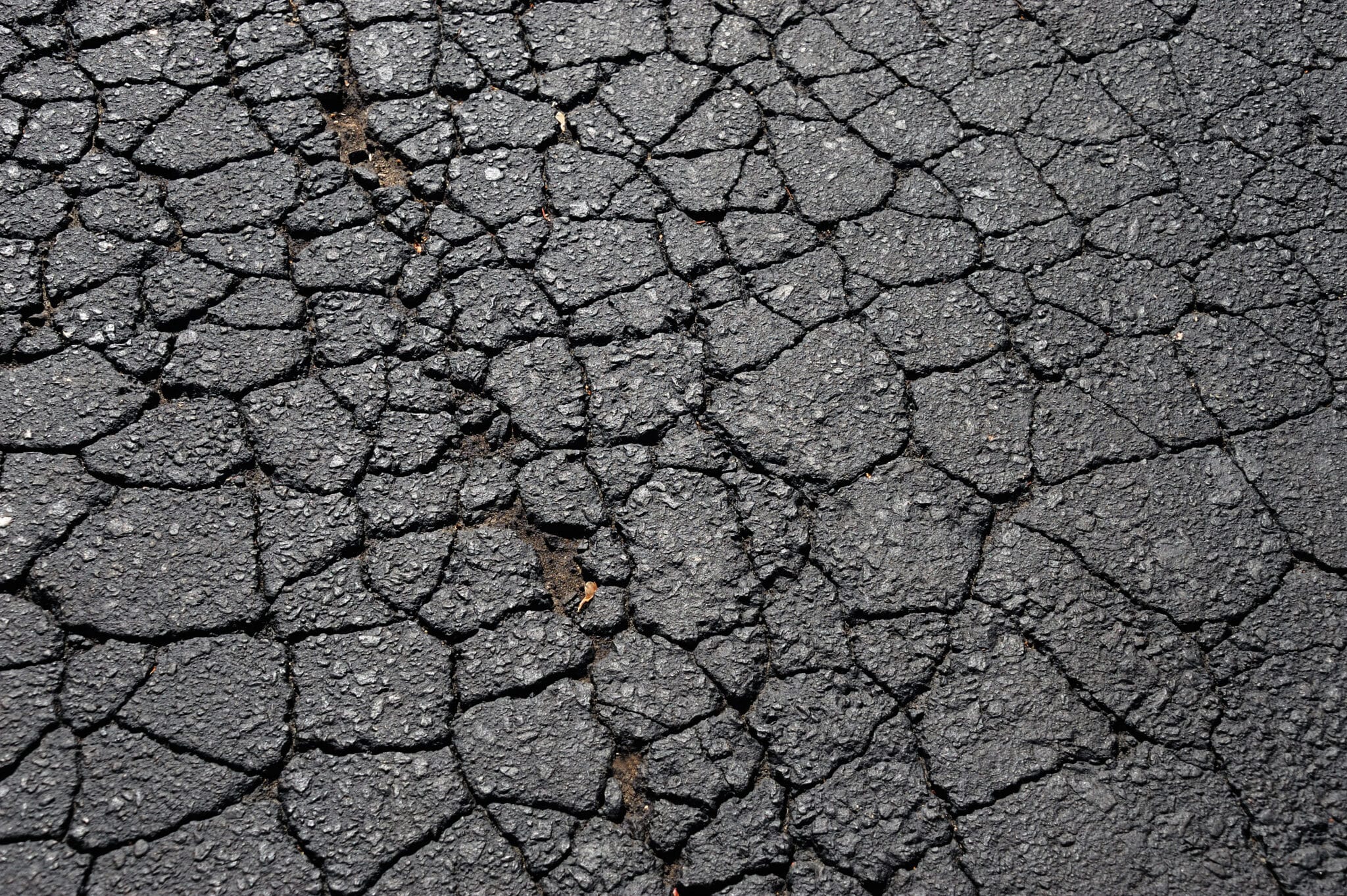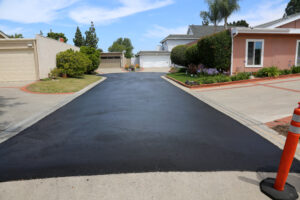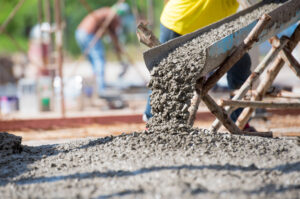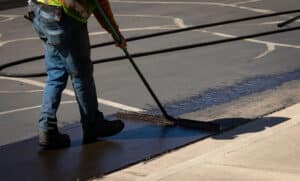Have you ever noticed a web of cracks sprawling across the surface of your asphalt? This unsightly form of asphalt damage is fatigue cracking. Sometimes called alligator cracking, fatigue cracking is a common type of damage that occurs on asphalt pavements. These cracks not only look unappealing, but they can also turn into major headaches if not fixed. But what exactly causes fatigue cracking, and how can it be prevented? In this guide, we will get into the details of fatigue cracking in asphalt and explain how it can be treated.
What is Fatigue Cracking
Fatigue cracking, sometimes referred to as alligator cracking, is a type of distress that occurs on asphalt pavements. It is called “alligator cracking” because the pattern of cracks resembles the scales of an alligator’s skin. These cracks typically begin as small, interconnected cracks and can eventually spread across large areas of the pavement. If left untreated, fatigue cracking can lead to more severe types of damage, such as potholes and rutting.
For property owners, fatigue cracking can be a major concern as it can lead to costly repairs and affect the overall appearance of the pavement. This damage is most commonly seen in high-traffic areas, such as highways, parking lots, and driveways. It is caused by repeated traffic loads and the aging of asphalt, making it a common problem for older pavements.
What Causes Fatigue Cracking in Asphalt?
Fatigue cracking usually happens due to both traffic loading and aging. Asphalt roads are built to handle vehicles’ weight and movements, but with time, the stress can lead to weakening and cracking. Heavy traffic, oversized trucks, and harsh weather can speed up this deterioration process.
Here are some common causes of fatigue cracking in asphalt:
Heavy Traffic: As mentioned earlier, repeated traffic loads can cause fatigue cracking in asphalt. This is especially true for roads that experience high volumes of heavy vehicles, such as trucks and buses. These vehicles’ constant weight and movement can put a lot of stress on the pavement, leading to cracking over time.
Pavement Thickness: The thickness of the asphalt layer plays a large role in its resistance to fatigue cracking. If the pavement is too thin, it may not be able to withstand heavy traffic loads and will likely develop cracks over time. This is why it is important to properly design and construct pavements with the appropriate thickness for the expected traffic volume.
Climate and Weather: Harsh weather conditions, such as extreme temperatures, heavy rainfall, and freeze-thaw cycles, can also contribute to fatigue cracking in asphalt. These environmental factors can cause the pavement to expand and contract, putting stress on the materials.
Aging of Asphalt: Like any material, asphalt also ages with time. It becomes more brittle and less flexible as it ages, making it more susceptible to cracking under traffic loads. This is why regular maintenance and repairs are important in extending the lifespan of asphalt roads. Without proper maintenance, the asphalt will deteriorate faster, and fatigue cracking will occur more frequently.
Poor Quality Asphalt Mix: The quality of the asphalt mix used in construction can also play a significant role in fatigue cracking. If the mix is not properly designed or does not contain enough binding materials, it will be weaker and more prone to cracking. This is why contractors must use high-quality materials and adhere to proper mixing and paving methods.
To tackle these problems and make asphalt roads last longer, paying attention to quality control during construction is key. This includes picking the right materials, getting the pavement thickness right, and compacting it just right. Keeping up with maintenance and fixing issues on time can help prevent cracks, keep the road safe, and extend its lifespan.
Why is Fatigue Cracking a Problem?
Fatigue cracking can be a major issue for property owners as it poses safety hazards and can potentially damage vehicles. In some cases, alligator cracking can become so severe that it forms a pothole. This not only creates a safety hazard for drivers but can also affect local foot traffic.
Fatigue cracking, with its characteristic alligator-skin pattern, can quickly make a driveway, parking lot, or roadway look neglected and deteriorated. This impacts the property’s aesthetic and can influence the perceptions of visitors, customers, or potential buyers, potentially detracting from the property’s value. Maintaining an attractive and well-kept appearance is essential for property owners who take pride in their investment and wish to maintain its value.
Unfortunately, fatigue cracking does not go away by itself. Over time, it will continue to spread and worsen, leading to bigger issues and more costly repairs or replacements. This is why property owners need to address fatigue cracking as soon as it appears.
Preventative Measures to Avoid Alligator Cracking
It is always cheaper to prevent fatigue cracking than to repair it after it has already appeared. Here are some measures that can help prevent alligator cracking:
Assess Traffic Loads: If you are paving a new asphalt surface, it’s important to consider the expected traffic loads and design the pavement accordingly. This will ensure that the pavement can withstand the weight of vehicles without developing fatigue cracking.
Proper Drainage System: Poor drainage is one of the leading causes of alligator cracking. Standing water under a pavement surface can weaken its structural integrity, making it more susceptible to damage from heavy traffic. Properly designed and maintained drainage systems can prevent water from accumulating and causing damage.
Regular Maintenance: Regular maintenance is crucial in preventing alligator cracking. This includes sealcoating, crack sealing, and patching any small cracks before they turn into larger issues. You should sealcoat an asphalt surface every 2-3 years to protect it from the elements and prevent cracks from forming.
Use Quality Materials: Using high-quality materials during construction is key to preventing alligator cracking. This includes choosing the right type of asphalt for the specific location and expected traffic loads, using a proper mix design, and ensuring proper compaction during installation.
By following preventive measures, property owners can lower the chances of fatigue cracking, keeping their asphalt pavements safe, functional, and looking good for years ahead.
Repairing Fatigue-Cracked Asphalt Surfaces
If fatigue cracking does occur, it’s important to address the issue promptly before it worsens. Here are some steps to take for repairing fatigue-cracked asphalt surfaces:
Evaluate the Damage: Before beginning any repairs, evaluate the extent and severity of the fatigue cracking. This will help determine the best course of action for repairing the pavement.
Crack Filling and Sealing: Small, isolated fatigue cracks can be addressed by cleaning the cracks and filling them with a suitable crack filler material. This prevents water and debris from penetrating the pavement structure and worsening the damage. Sealcoating can also help prevent further cracking.
Sub-Base Reconstruction: If the fatigue cracking is widespread or severe, it may be necessary to reconstruct the sub-base, which is the layer beneath the asphalt pavement. This involves excavating and replacing this layer with proper materials to provide a stable foundation for the new asphalt surface.
Resurfacing: In these severe cases, after the sub-base has been dug up and replaced, the pavement surface can be resurfaced with a new layer of asphalt. This will provide a smooth, durable surface that can withstand traffic loads and prevent further fatigue cracking.
Asphalt experts can offer valuable advice on choosing the right repair techniques and materials for your needs. Well-done repairs, along with regular maintenance and preventive measures, can prolong the lifespan of asphalt surfaces and prevent major headaches.
Prevent Fatigue Cracking or Repair Existing Damage with Superior Asphalt
Fatigue cracking is a major issue for property owners that, if left unchecked, can compromise the structural integrity and aesthetics of an asphalt surface. However, with proper knowledge and proactive maintenance, fatigue cracking can be effectively prevented and repaired. Remember to regularly inspect your asphalt surface for any signs of fatigue cracking and address them promptly. If you need help fixing or preventing fatigue cracking, contact us today! We offer a range of asphalt maintenance and repair services to keep your asphalt in top shape.




